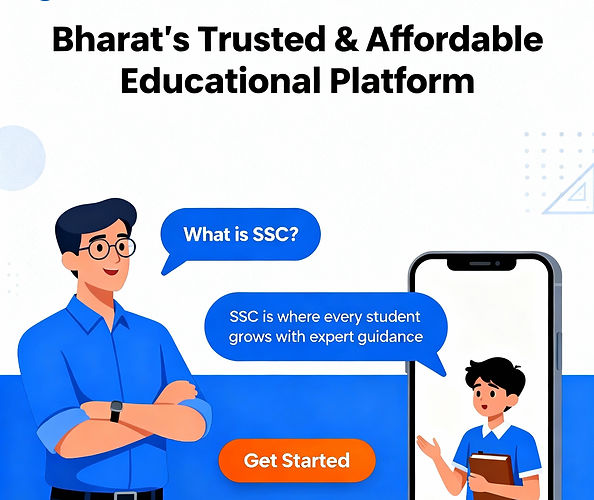Indian Economic Service Exam 2025: Splendid Topics, Syllabus & Career Path
- SOURAV DAS

- May 5
- 3 min read

Hello Future Economic Architects! If your heart skips a beat for budget speeches, you secretly fangirl over fiscal deficits, or you enjoy solving macroeconomic puzzles like Sudoku—then Indian Economic Service (IES) is your real jam. 🧠💰
The IES Exam 2025 isn’t just another government exam. It’s a gateway to shaping India's economic policies, planning national development, and actually being in the room where it happens. And guess what? This blog will break it all down with fun, facts, and future goals.
✅ Eligibility Criteria for IES 2025 📋
Let’s keep it clear before the economics puns begin:
🎓 Education: You must have a Postgraduate degree in Economics/Applied Economics/Business Economics/Econometrics from a recognized university.
🧑🎓 Final-year PG students? Yes, you’re eligible if you’ll complete your degree before the exam date.
👤 Age Limit:
Minimum: 21 years
Maximum: 30 years (Relaxation available for reserved categories as per norms)
🌍 Nationality:
Must be an Indian Citizen
📝 Indian Economic Service Exam Pattern – 2025
The exam has two stages:
1. Written Exam (Total: 1000 marks)2. Viva/Interview (200 marks)
Written Papers:
Paper | Marks | Type |
General English | 100 | Descriptive |
General Studies | 100 | Descriptive |
General Economics – I | 200 | Descriptive |
General Economics – II | 200 | Descriptive |
General Economics – III | 200 | Descriptive |
Indian Economics | 200 | Descriptive |

🎯 Splendid & Must-Cover Topics for IES 2025
Let’s decode what really matters. Here's what toppers and past papers scream: “DON’T IGNORE THESE!” 👇
📘 General Economics Paper I:
Microeconomics: Consumer & Producer Theory, General Equilibrium, Game Theory
Demand & Supply Functions
Price Elasticity, Cost Functions
Theory of Distribution
Welfare Economics
Market Structures – Monopoly, Oligopoly, Monopolistic Competition
🔥 Pro Tip: Know your diagrams and assumptions like they’re your Insta passwords!
📙 General Economics Paper II:
Macroeconomics: IS-LM, AD-AS Models
Inflation & Unemployment (Philips Curve)
Economic Growth Models (Solow, Harrod-Domar, Endogenous Models)
Fiscal and Monetary Policies
Open Economy Models (BoP, Exchange Rates)
Indian Public Finance and Budgeting
💡 Hint: Link policies with real-life budget terms to shine in the exam!
📗 General Economics Paper III:
Econometrics (OLS, Dummy Variables, Multicollinearity, Heteroskedasticity)
Probability & Sampling Techniques
Index Numbers
National Income Concepts
Time Series & Forecasting
Statistical Inference & Hypothesis Testing
Poverty, Inequality (Gini Coefficient, Lorenz Curve)
📊 Data Drill: Practice PYQs and use past-year economic surveys for examples!
🇮🇳 Indian Economics Paper:
Planning Models & Five-Year Plans
NITI Aayog and Economic Reforms
Agriculture and Land Reforms
Industrial Policy
Trade Policy, WTO
Human Development, HDI
Labour & Employment Trends
Financial Sector (RBI, SEBI, NPAs, Financial Inclusion)
🔥 Super Strategy: Read Economic Survey + Budget Highlights + RBI Reports = Full marks bait 🎣

🧑🏫 Best Colleges That Produce IES Rockstars
IES toppers come from:
Delhi School of Economics (DSE)
Jawaharlal Nehru University (JNU)
Indian Statistical Institute (ISI)
IGIDR, Mumbai
Madras School of Economics
Gokhale Institute of Politics and Economics
Jadavpur University
University of Hyderabad
Presidency University, Kolkata
Banaras Hindu University (BHU)
📚 Fun Note: You don’t need a fancy college, just killer concepts and a love for long-run curves!
👔 Who Hires Indian Economic Service Officers?
Once you qualify, you’re inducted into the Grade A Gazetted Officers team under Department of Economic Affairs, Ministry of Finance.
📍 You’ll work in:
NITI Aayog
Ministry of Finance (DEA, DFS)
RBI & SEBI (liaison roles)
Ministry of Corporate Affairs
Labour & Employment Ministry
Ministry of Planning & Rural Development
International Organizations: IMF, World Bank (after some service)
💰 Salary and Perks for IES Officers
Starting as Assistant Director in the Indian Economic Service:
Basic Pay: ₹56,100/month
Total Gross Salary: ₹85,000 – ₹1,10,000/month
Plus DA, HRA, TA, LTC, Government Accommodation
Foreign Deputation = $$$$
Promotions up to Chief Economic Adviser level or even Secretary (Economic Affairs)
🎯 Money + Power + Policy Impact = Economist Goals Unlocked! 🔓
📈 Future Career Options After IES
IES opens tons of career doors. Here's where you can head:
Promotion Ladder: Assistant Director → Dy. Director → Director → Economic Adviser → Principal Adviser → Secretary
Policy Think-Tanks:
Indian Council for Research on International Economic Relations (ICRIER)
National Institute of Public Finance and Policy (NIPFP)
Observer Research Foundation (ORF)
International Opportunities: With experience, IES officers often work with IMF, UNDP, WTO, ADB, and World Bank.
Academia & Research Fellowships
PhD in India or Abroad (you get study leaves!)
Corporate Policy Think Tanks after retirement
😎 Final Words – Data + Dedication = IES Success!
The Indian Economic Service is one of the most elite, underrated, and powerful roles in shaping India's economy. You're not just taking a test—you’re writing the future GDP script of the country. 📊🇮🇳
So prep with passion, revise with purpose, and remember: good economists think, great ones serve!
If this blog helped you, share it with your entire eco gang, post it on your stories, or tag us when you crack the test!



_edited.jpg)






















Hey, have you checked out sokapicks.com for free, reliable soccer predictions? Their expert tips cover all major leagues and could really up your game! Also, if you're curious about the Indian Economic Service Exam 2025, this detailed guide on syllabus and career path at souravsirclasses.com looks super helpful. Wondering how these resources might boost your strategy or prep? Would love to hear your thoughts!
https://sokapicks.com
https://betting.omoyetips.com
https://surepredictions.net
invro mining invro mining
golden mining golden mining
opto miner opto miner
EarnMining EarnMining
ri mining ri mining
come mining come mining
come mining come mining
come mining come mining
come mining come mining
come mining come mining
come mining come mining
come mining come mining
come mining come mining
invro mining invro mining
golden mining golden mining
opto miner opto miner
EarnMining EarnMining
ri mining ri mining
come mining come mining
come mining come mining
come mining come mining
come mining come mining
come mining come mining
come mining come mining
come mining come mining
come mining come mining
invro mining invro mining
golden mining golden mining
opto miner opto miner
EarnMining EarnMining
ri mining ri mining
come mining come mining
come mining come mining
come mining come mining
come mining come mining
come mining come mining
come mining come mining
come mining come mining
come mining come mining
free funded forex account a gateway to risk free trading
A free funded forex account offers a unique opportunity to enter the world of trading without risking your own money. It acts as a gateway to risk-free trading, where brokers provide real capital to traders based on their performance. This allows aspiring traders to test strategies, gain live market experience, and build confidence—all without making a personal deposit. Whether you're a beginner or an experienced trader, a funded account is the smartest way to trade, learn, and earn—without financial pressure or upfront costs.
Contact us Address – 1st Floor, The Sotheby Building, Rodney Bay, Gros-Islet, SAINT Lucia P.O Box 838, Castries, Saint Lucia Phone no – +97144471894 Website – https://winprofx.com/